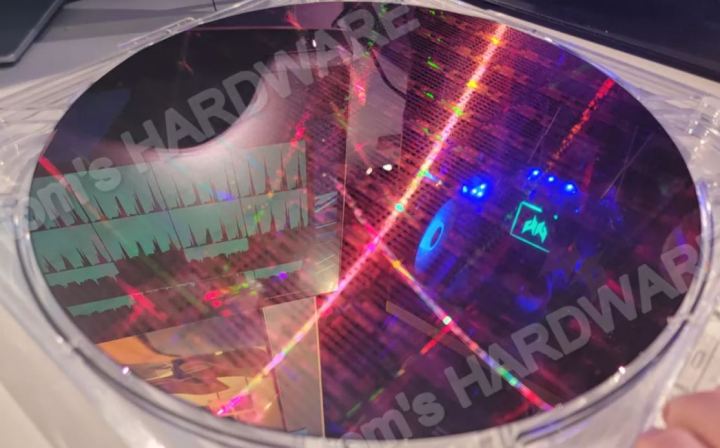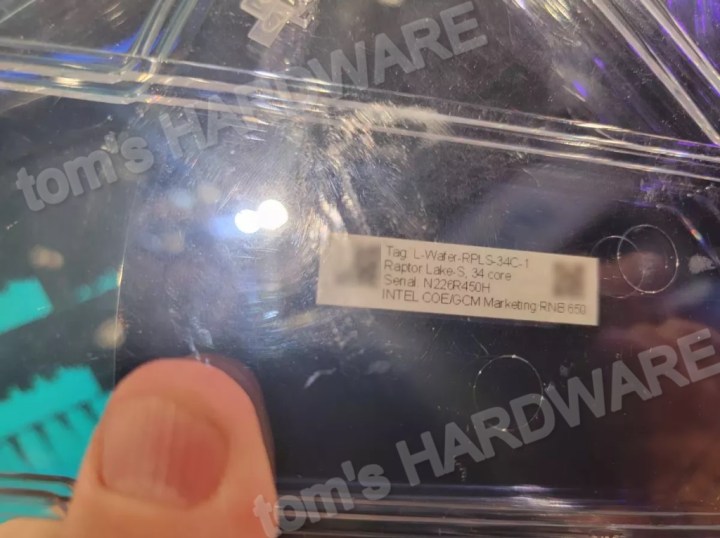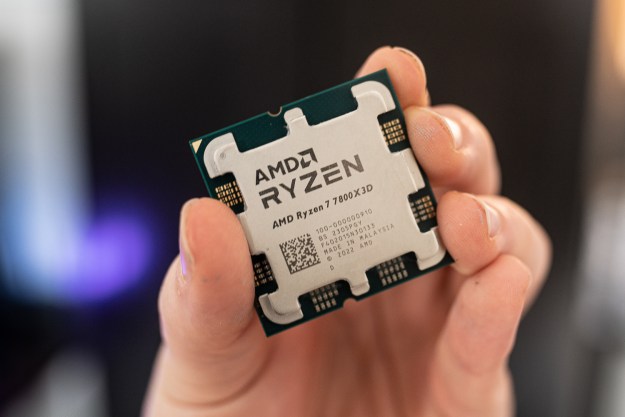A mysterious wafer full of Intel Raptor Lake-S processors was spotted during Intel Innovation 2022. While that in itself may not sound odd, the weird part is that the wafer contains 34-core chips that are labeled as Raptor Lake, whereas Intel’s new flagship Core i9-13900K maxes out at 24 cores.
Is Intel hiding an even more powerful processor? That’d be nice, but all signs point to it being something else entirely — a Sapphire Rapids chip.

As keenly spotted by Tom’s Hardware, this wafer, which was put on display at Intel Innovation 2022, has larger dies than those of the Raptor Lake desktop dies Intel has previously shown. These are 34-core CPUs, and the maximum model of an Intel Raptor Lake currently comes with just 24. There are more discrepancies between the mysterious wafer and a standard Raptor Lake wafer, too.
For starters, the cores aren’t aligned horizontally in two rows as is typical for a Raptor Lake die. The cores on this chip are also interconnected with a mesh, resembling the look of an Intel Ice Lake server processor. Lastly, there are a total of eight DDR5 memory controllers as well as Intel Ultra Path Interconnect (UPI) blocks. This, again, is not something you’d find on a consumer desktop CPU.
As mentioned above, the die is most likely too large to fit into a typical desktop CPU with the LGA 1700 socket. It contains 34 core areas, and all of these appear to be performance (P) cores as opposed to a mix of P-cores and efficiency (E) cores. A processor with 34 P-cores is difficult to imagine; even the new flagship Core i9-13900K only has eight P-cores and 16 E-cores.

This mysterious wafer, even though the label calls it a Raptor Lake-S model, is most likely not that at all. Both Tom’s Hardware and Angstronomics concluded that we’re most likely looking at a monolithic Intel Sapphire Rapids MCC (Mid Core Count) design instead. Intel Sapphire Rapids is a codename for the company’s fourth generation of Xeon server processors, which, after some delays, are still not quite up for grabs.
While this wafer is most likely not a Raptor Lake model, that is not to say that Intel won’t release a more powerful version of the desktop chip at some point. We’ve seen it happen with the Core i9-12900KS. However, it’s highly unlikely that the core bump would be as high as to reach 34 cores.
Why was this wafer labeled “Raptor Lake-S” if it’s a Sapphire Rapids model, and why was it on display? It seems that the booth staff at Intel Innovation were unaware that these CPUs are unreleased. Intel might have leaked its new workstation CPU by mistake. We may not know the full story until Sapphire Rapids finally hits, which probably won’t happen until 2023.
Editors' Recommendations
- It just became the perfect time to buy a last-gen Intel CPU
- The only Intel CPU you should buy is over a year old
- Everything we know about Lunar Lake, Intel’s big next-generation chips
- Intel just launched the ‘world’s fastest’ CPU
- Here’s a shocking reminder of just how far ahead Intel is in race with AMD




